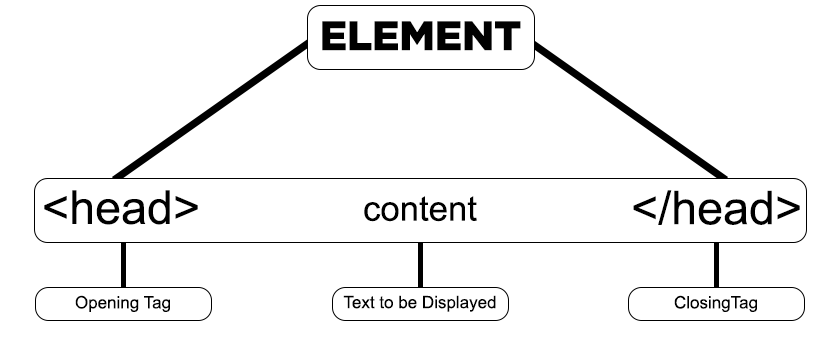HTML Tags:
If you want to build a beautiful website, tags are essential elements that help you achieve that.
An HTML tag acts as a container for content or other HTML tags. Tags are words enclosed within < and > angle brackets.
They serve as keywords that instruct the web browser on how to format and display the content.
Html Tags:
Commonly used tags in HTML
Here are some commonly used tags in HTML. These are the only tags used 70% of the time
Document Structure Tags
<!DOCTYPE html>: Specifies the document type.<html>: Encloses the entire HTML document.<head>: Contains meta-information and links to scripts and stylesheets.<body>: Contains the content of the web page.
Metadata Tags
<title>: Sets the title of the web page.<meta>: Provides metadata such as character set, author, and viewport settings.<link>: Links external resources like stylesheets.
Text Formatting Tags
<p>: Paragraph.<h1>,<h2>,<h3>,<h4>,<h5>,<h6>: Headings.<strong>: Strong emphasis (typically bold).<em>: Emphasis (typically italic).<br>: Line break.<hr>: Horizontal rule.
List Tags
<ul>: Unordered list.<ol>: Ordered list.<li>: List item.
Hyperlink and Media Tags
<a>: Anchor (used for links).<img>: Image.<audio>: Audio content.<video>: Video content.
Form Tags
<form>: Form.<input>: Input field.<textarea>: Text area.<button>: Button.<select>: Dropdown list.<option>: Options within a<select>or<datalist>.
Table Tags
<table>: Table.<tr>: Table row.<td>: Table data cell.<th>: Table header cell.<thead>: Table header group.<tbody>: Table body group.<tfoot>: Table footer group.
Semantic Tags
<header>: Header section.<footer>: Footer section.<article>: Article.<section>: Section.<nav>: Navigation.<aside>: Sidebar content.
Paired and Unpaired HTML Tags
Well, that was a really long list. Don't worry we will study these in detail. In HTML, tags can be broadly categorized into two types:
1. Paired Tags (Container Tags)
These are tags that come in pairs, consisting of an opening tag and a corresponding closing tag. The content goes between these two tags.
- Opening Tag: The opening tag starts with
<and ends with>. For example,<p>. - Closing Tag: The closing tag also starts with
<but includes a forward slash/before the tag name, and ends with>. For example,</p>.
Examples:
- Paragraphs:
<p>This is a paragraph.</p> - Headings:
<h1>This is a heading.</h1>
2. Unpaired Tags (Self-Closing Tags or Stand-Alone Tags)
These are tags that don't require a closing tag. They are self-contained, encapsulating all the information within a single tag.
- Self-Closing Tag: A self-closing tag starts with
<and ends with/>(though the/is optional in HTML5). For example,<img />or<br>.
Note: Later if you happen to use react or a framework like Next.js, you will have to close the tag like this <br/> <hr/>. So it is better to cultivate the habit!
Examples of self-closing tags:
- Line Break:
<br/> - Horizontal Rule:
<hr/> - Image:
<img src="image.jpg" alt="An example image"/>
Pictorial Representation of Tags
The image below offers a visual representation of how tags are structured in HTML. As you can see, an element can contain other elements, which may also contain additional elements, forming a tree-like structure. This hierarchy can include self-closing tags as well as nested tags, as illustrated in the picture





0 Comments
Thankyou for comment.